VANCOUVER — Atac Resources (TSXV: ATC; US-OTC: ATADF) is the latest explorer to attract a major’s attention amid a new gold rush in the Yukon.
On April 10, the company struck an option agreement on its expansive Orion project with Barrick Gold (TSX: ABX; NYSE: ABX), wherein the major could earn a 70% interest in nearly 800 sq. km that hosts Canada’s only Carlin-type gold district.
The terms outline potential investment by Barrick totalling $63.3 million, which includes a private placement of $8.3 million and a two-staged, $55-million exploration earn-in option to acquire up to 70% of Orion, which comprises the central portion of the 1,742 sq. km Rackla property, 100 km northeast of Keno City.

Map of Atac Resources’ 1,742-sq.-km Rackla property in the Yukon. Credit: Atac Resources.
“We’ve actually had a relationship with them for a long time, and they’ve been following our story. Barrick’s team out of Nevada are obviously leaders in terms of Carlin-style geology, and they will bring a systematic exploration strategy that’s well-suited for the project size,” Atac president and CEO Graham Downs says during an interview at the firm’s Vancouver office.
“We’d been talking about the details of a partnership for many years, and under this agreement we get to keep our ownership in the bookends of the land package. Barrick was certainly intrigued by drill results at Orion in 2016,” he adds.
Orion covers 780 sq. km and includes the drill-confirmed Orion and Anubis Carlin-type gold discoveries, as well as eight other early-stage, Carlin-type gold prospects.
The area is part of the broader Nadaleen trend — which also hosts the Osiris, Ibis, Conrad and Sunrise target areas — where mineralization reportedly occurs in limestone debris flows and turbidite deposits characteristic of an offshore sedimentary environment.

Camp facilities at Atac Resources’ Rackla gold project. Credit: Atac Resources.
Atac drilled 1,540 metres at the central Orion zone in 2016, targeting pyritic siltstone and footwall brecciated limestone stratigraphy along the Anubis fault. The work returned elevated gold and associated pathfinder elements (arsenic, antimony, mercury and thallium) that Atac says are “characteristically peripheral to Carlin-type mineralized systems.” The assays were headlined by 61.3 metres of 2.75 grams gold per tonne from 18 metres deep in hole 16-10.
“In terms of timing, it was just a question of finding a deal that worked for both sides. Barrick’s team definitely likes the rocks, and it came to a point where they wanted to get in there and have boots on the ground,” Downs says.
“It will be a real collaboration. Our exploration has been heading in the right direction … for us it ended up more of a market — or capital — issue. They bring a more systematic outlook to exploration and give us the backing to dig into that district-scale potential at Rackla. We’re looking at a fresh start that involves a review of the entire land position.”

A core shack at Atac’s main Rackla camp. Photo by Matthew Keevil.
Barrick must spend $35 million on exploration over five years to acquire a 60% interest Orion, which would include $10 million in guaranteed fieldwork over the first three years. The gold major would earn the final 10% via a subsequent, $20-million investment.
Atac will also receive a capital boost courtesy of the private placement, which will result in Barrick holding a 19.9% equity stake in the junior. Atac says the proceeds will fund a $10-million program at the Osiris and Rau projects, which are not subject to the earn-in agreement. The offering will consist of 16.7 million flow-through shares sold at 50¢ through a donation arrangement by PearTree Securities.
The Rau trend occupies the western edge of the Rackla land package, and hosts the Tiger carbonate-replacement gold deposit, the Airstrip gold anomaly and the Ocelot silver-lead-zinc discovery.
The Osiris project sits on the properties’ eastern extent and is highlighted by the Conrad Carlin-type zone, where Atac cut 43 metres of 18.44 grams gold from 66 metres deep in hole 12-114.
“We’re definitely going to prioritize high-grade mineralization at the Conrad zone around the 350 and 650 faults, which we’ve modelled. Drilling to date has been parallel to those faults, so we’re going to change the orientation,” Downs says.
“It will be similar at Osiris North, where we have pretty wide spacing … it’s really a question following up on grade and building ounces. We hope to work towards a resource in the near-term. We have a number of zones over a large area, and each one could be a stand-alone deposit.”
In January, Atac outlined plans for a 15,000-metre diamond and rotary air blast drill campaign.

Stacks of core boxes at Atac Resources’ Rackla gold project 100 km due northeast of Keno City, Yukon. Credit: Atac Resources.
The exploration would target potential high-grade gold structures at the Conrad and Osiris zones.
Diamond drilling will focus on high-grade gold mineralization the company suspects is associated with the 350 and 650 faults, where hole 10-8 returned 21.1 metres of 8.03 grams gold from 41 metres deep, and hole 12-184 intersected 51.8 metres of 4.05 grams gold from 147 metres deep.
“We’ll review that exploration program, since we’ll have more money earmarked for the Conrad and Osiris areas. The Orion program will have to be rejigged with Barrick’s input,” Downs says, adding that the companies hope to get drills turning by early June.
Atac shares have traded in a 52-week range of 32¢ to 95¢ per share, and closed at 58¢ per share at press time.
The company reported working capital of nearly $16 million at the end of 2016, and has 123 million shares outstanding for a $71-million market capitalization.
“There’s a bit of a flight from risk element going on when you talk about the recent investments in the Yukon,” Downs says. “The jurisdiction has proven to be a stable place to work over the years, and it’s truly underexplored. There’s a ton of potential, and you can work there. I also see companies becoming more comfortable working in Canada’s North, and that will keep growing over time.”

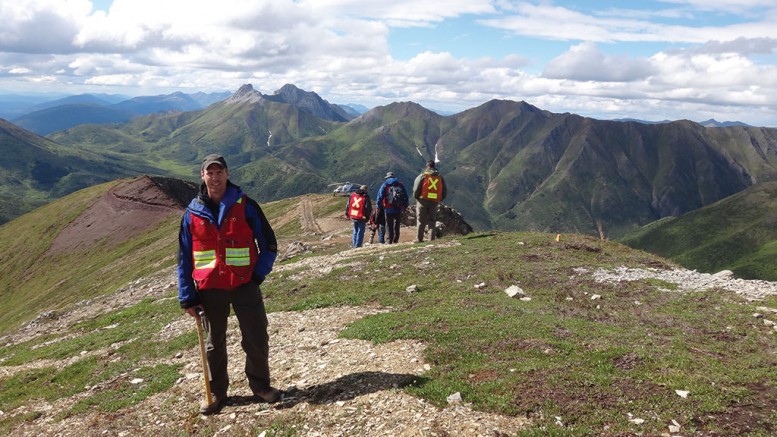
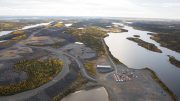
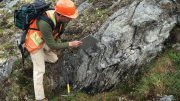
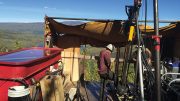
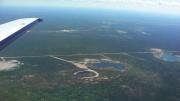
Be the first to comment on "Barrick joins Atac at Orion in the Yukon"